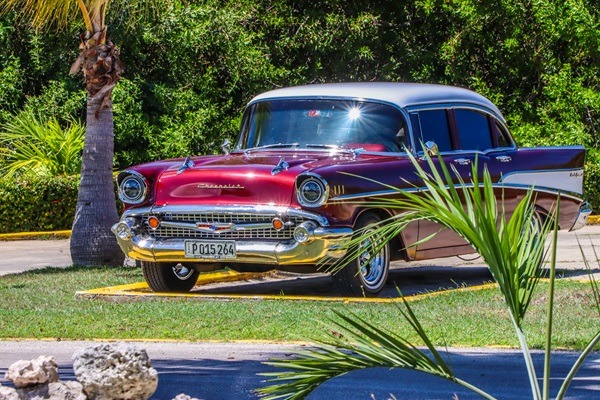Owning a classic car is a journey that blends nostalgia, craftsmanship, and a shared love of history. For collectors and car enthusiasts, these vehicles symbolize more than transportation—they embody timeless elegance, history, and, often, considerable value. Notably, the net worth of classic cars varies widely, with well-maintained models fetching anywhere from $20,000 to several million dollars depending on rarity and condition. Many classic car owners, from their early days of ownership well into retirement, enjoy caring for these prized machines well into their older years, whether they’re 35 or 75.
In this guide, we’ll uncover essential ways to protect and maintain your classic car, explore the deep connection between classic car owners and their vehicles, and examine how restoration and preservation can add lasting value to your classic car.
What Drives the Unique Connection Between Classic Cars and Their Owners?
Classic cars captivate their owners with a sense of nostalgia and pride. Unlike modern vehicles, which prioritize technology and efficiency, classic cars evoke a different era of craftsmanship and driving pleasure. Many owners share personal stories tied to these cars—maybe it’s a family heirloom passed down through generations or a rare model discovered after years of searching. For those who collect or restore classic cars, each vehicle tells a story, encapsulating memories, eras, and shared experiences.
This attachment is evident in the care and dedication required to keep these vehicles roadworthy. Owners become deeply familiar with their car’s quirks and performance traits, forming an almost symbiotic relationship. In contrast to modern cars, which are designed to withstand the rigors of daily life, classic cars require focused maintenance and protection, elevating them from a mode of transport to a cherished artifact.
How Can You Best Protect Your Classic Car from Environmental Damage?
One of the most important aspects of classic car maintenance is protecting it from environmental damage. Classic cars are highly susceptible to wear and damage caused by sunlight, moisture, and temperature fluctuations. Modern vehicles are built to weather the elements, but classic cars often lack the protective coatings or materials needed to resist prolonged exposure.
Using a high-quality car cover is one of the simplest yet most effective ways to protect a classic car. Here are some tips on what to consider when choosing a car cover:
- Material: Covers designed for outdoor storage should be weather-resistant with UV protection to guard against sunlight. Indoor covers should focus on preventing dust accumulation and allowing breathability.
- Fit: Opt for a custom-fit cover, which is tailored to your car’s model and shape. A snug cover reduces the risk of scratches and offers maximum protection against external factors.
- Breathability: Breathable fabrics allow moisture to escape, preventing condensation and corrosion, which is crucial for long-term storage.
- Ease of Use and Features: Some covers include additional features like reinforced stitching or lockable hems, which are particularly helpful if you’re storing your car in a public space or anticipate a prolonged storage period.
What Maintenance Routine Should You Follow for a Classic Car?
Maintaining a classic car requires a hands-on approach. Without the computer diagnostics that come standard in today’s cars, classic car owners need a tailored maintenance routine that addresses the car’s unique needs. Here are a few key areas to focus on:
- Engine Checkups: Classic car engines require frequent maintenance, especially if the vehicle isn’t driven regularly. Routine tasks like oil changes, spark plug replacements, and fluid checks should be part of your monthly care routine to prevent wear.
- Tire Care: Many classic cars sit unused for long periods, which can lead to flat spots on the tires. Regularly moving or rotating the tires helps avoid these issues, while monitoring tire pressure ensures a smooth ride.
- Battery Management: Infrequent use can drain a classic car battery. Investing in a trickle charger or battery tender can keep your battery healthy, saving you the hassle of replacing it frequently.
- Fluid Replacement: Over time, fluids like brake fluid, transmission fluid, and coolant can degrade. Changing these fluids at regular intervals prevents corrosion in the car’s internal systems.
- Interior Maintenance: The interior of a classic car is just as susceptible to aging as the exterior. Using conditioners for leather seats, cleaning solutions for the dashboard, and protectants for plastic or vinyl materials can help keep the interior looking pristine.
Should You Restore or Preserve Your Classic Car?
One of the biggest decisions for classic car owners is whether to restore their vehicle or preserve its original condition. Restoration involves bringing the car to a near-new condition, often with repainting, reupholstering, or upgrading safety features. This approach appeals to those who want their car to look and perform like it just came off the production line, showcasing a flawless appearance.
On the other hand, preservation maintains the car’s original features, including any natural wear and tear. This choice appeals to collectors who view patina and minor imperfections as marks of authenticity and character. For these owners, each scratch or faded paint area tells a story of the car’s journey, which can be just as valuable as the car’s market worth.
How Can Modern Tools Assist in Classic Car Maintenance?
While classic cars don’t rely on advanced technology, certain modern tools can simplify maintenance without compromising originality. Digital moisture meters, for example, can detect early signs of rust, allowing owners to treat it before it becomes a more significant issue. Similarly, portable battery jump-starters can save time and hassle when starting a classic car that hasn’t been used for a while.
Even with these tools, the principles of classic car care remain the same: patience, attention to detail, and a commitment to preserving the car’s unique character. Using modern resources to supplement these efforts allows for a balanced approach that marries tradition with technology.
Conclusion: Why Is Protecting a Classic Car So Important?
Owning a classic car is about more than just having a mode of transportation; it’s about preserving a piece of history. A well-maintained classic car can become a valuable family asset, appreciated and cherished by future generations. By prioritizing protection from the elements, adhering to a strict maintenance routine, and balancing restoration with preservation, you can ensure your car remains both functional and beautiful.
Through these steps, you’re not just taking care of a car; you’re safeguarding a legacy. A classic car is an investment in craftsmanship, tradition, and personal history—a tribute to an era when driving was as much about style as it was about getting from point A to B. With dedication and care, you can ensure that your classic car continues to be a source of pride and enjoyment for years to come.

